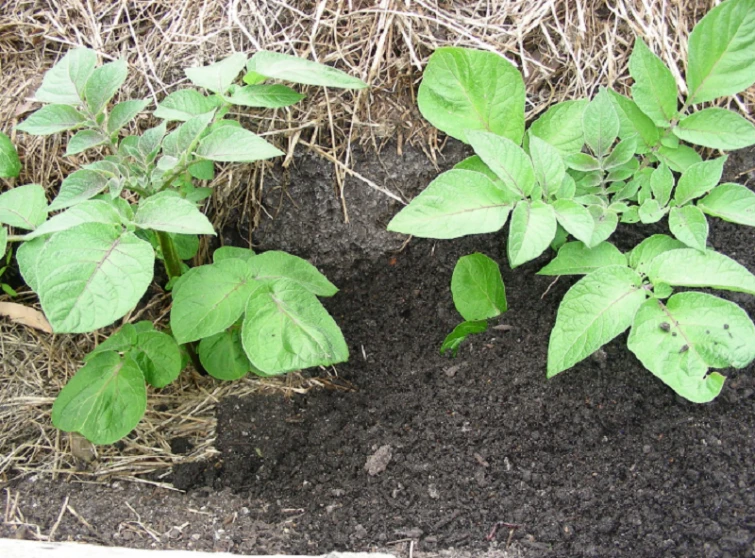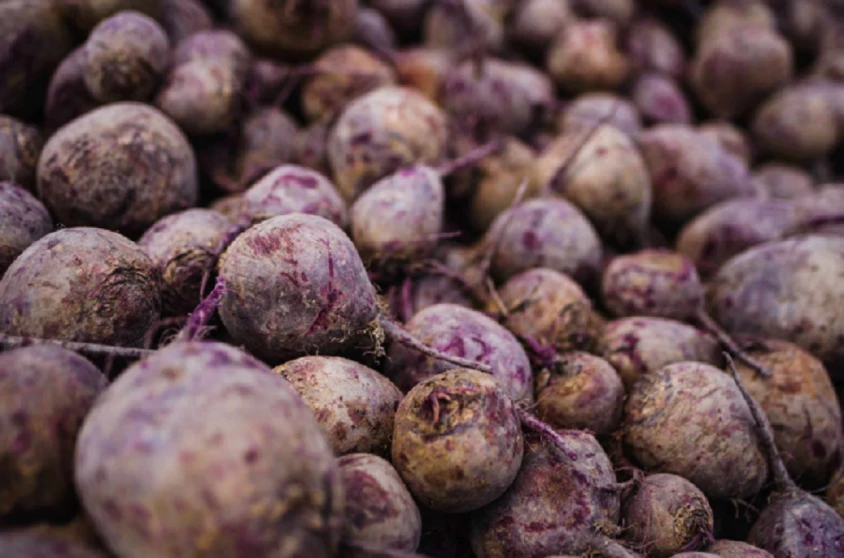A Beginner's Guide to Planting and Growing Potatoes

Potatoes are a versatile and beloved staple in cuisines around the world, and growing them at home can be a rewarding and straightforward endeavor. Whether you have a spacious garden or a few pots on a balcony, cultivating your own potatoes can be a fulfilling experience. In this guide, we will explore the step-by-step process of planting and growing potatoes, making it accessible to beginners and seasoned gardeners alike.
Choosing the Right Seed Potatoes:
The first step in growing potatoes is selecting the right seed potatoes. These are not actually seeds, but rather small whole potatoes or sections of larger ones that have "eyes" or sprouts. It's important to choose certified disease-free seed potatoes from a reputable source to ensure a healthy start for your potato crop.
Preparing for Planting:
Before planting, it's essential to prepare the soil. Potatoes thrive in well-draining, loose, and slightly acidic soil. Tilling the soil and incorporating organic matter, such as compost or aged manure, can improve its texture and fertility. Additionally, potatoes prefer a sunny location with at least 6-8 hours of sunlight per day.
Planting Process:
Planting potatoes can be done in the ground, raised beds, or containers. If planting in the ground, dig a trench about 4 inches deep and place the seed potatoes cut side down, spacing them about 12 inches apart. Cover the potatoes with soil and water thoroughly. For container planting, choose a large container and follow a similar process, ensuring proper drainage.
Hilling and Mulching:
As the potato plants grow, they will need to be hilled—meaning, more soil should be added around the base of the plants to encourage the development of tubers and protect them from exposure to sunlight, which can cause them to turn green and become toxic. Mulching with straw or organic matter can help retain moisture and suppress weed growth.
Watering and Maintenance:
Potatoes require consistent moisture, especially during the tuber formation stage. However, it's important to avoid overwatering, as this can lead to rot. Regular inspection for pests and diseases, such as potato beetles and blight, is also crucial for maintaining a healthy potato crop.
Harvesting:
Depending on the potato variety, harvesting can typically occur 70-120 days after planting. As the plants flower and begin to yellow and die back, it's a sign that the potatoes are ready to be harvested. Carefully dig around the plant to unearth the potatoes, being mindful not to damage them.
Curing and Storage:
After harvesting, allow the potatoes to cure in a cool, dark, and well-ventilated area for about two weeks. This allows the skins to thicken and any minor injuries to heal, extending their storage life. Store the cured potatoes in a cool, dark, and dry place to prevent sprouting and maintain their quality.
In conclusion, planting and growing potatoes can be a gratifying and accessible endeavor for gardeners of all levels. By following these steps and providing the necessary care, you can enjoy a bountiful harvest of fresh, flavorful potatoes to savor in your favorite dishes.
---------------------------------------------------------------------------------------------------------------------------------------------------------------------------------------------------------------

Potatoes are a versatile and beloved staple in cuisines around the world, and growing them at home can be a rewarding and straightforward endeavor. Whether you have a spacious garden or a few pots on a balcony, cultivating your own potatoes can be a fulfilling experience. In this guide, we will explore the step-by-step process of planting and growing potatoes, making it accessible to beginners and seasoned gardeners alike.
Choosing the Right Seed Potatoes:
The first step in growing potatoes is selecting the right seed potatoes. These are not actually seeds, but rather small whole potatoes or sections of larger ones that have "eyes" or sprouts. It's important to choose certified disease-free seed potatoes from a reputable source to ensure a healthy start for your potato crop.
Preparing for Planting:
Before planting, it's essential to prepare the soil. Potatoes thrive in well-draining, loose, and slightly acidic soil. Tilling the soil and incorporating organic matter, such as compost or aged manure, can improve its texture and fertility. Additionally, potatoes prefer a sunny location with at least 6-8 hours of sunlight per day.
Planting Process:
Planting potatoes can be done in the ground, raised beds, or containers. If planting in the ground, dig a trench about 4 inches deep and place the seed potatoes cut side down, spacing them about 12 inches apart. Cover the potatoes with soil and water thoroughly. For container planting, choose a large container and follow a similar process, ensuring proper drainage.
Hilling and Mulching:
As the potato plants grow, they will need to be hilled—meaning, more soil should be added around the base of the plants to encourage the development of tubers and protect them from exposure to sunlight, which can cause them to turn green and become toxic. Mulching with straw or organic matter can help retain moisture and suppress weed growth.
Watering and Maintenance:
Potatoes require consistent moisture, especially during the tuber formation stage. However, it's important to avoid overwatering, as this can lead to rot. Regular inspection for pests and diseases, such as potato beetles and blight, is also crucial for maintaining a healthy potato crop.
Harvesting:
Depending on the potato variety, harvesting can typically occur 70-120 days after planting. As the plants flower and begin to yellow and die back, it's a sign that the potatoes are ready to be harvested. Carefully dig around the plant to unearth the potatoes, being mindful not to damage them.
Curing and Storage:
After harvesting, allow the potatoes to cure in a cool, dark, and well-ventilated area for about two weeks. This allows the skins to thicken and any minor injuries to heal, extending their storage life. Store the cured potatoes in a cool, dark, and dry place to prevent sprouting and maintain their quality.
In conclusion, planting and growing potatoes can be a gratifying and accessible endeavor for gardeners of all levels. By following these steps and providing the necessary care, you can enjoy a bountiful harvest of fresh, flavorful potatoes to savor in your favorite dishes.